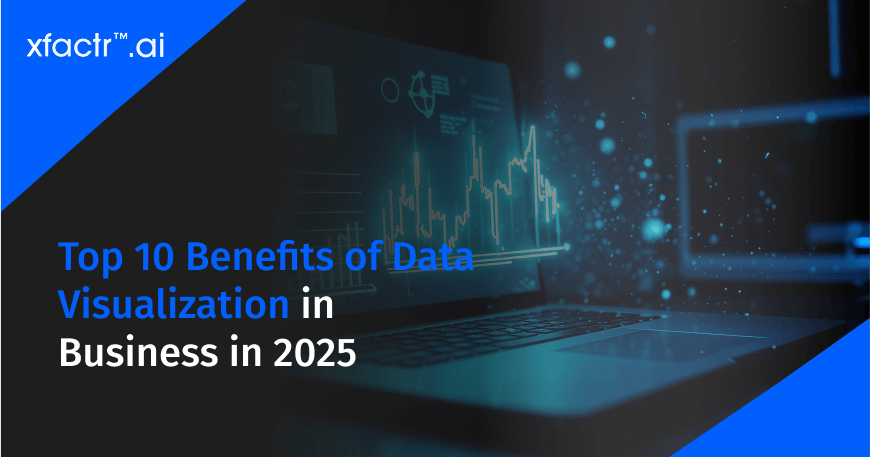Ever opened a spreadsheet full of endless numbers and thought, “What am I even looking at?” You’re definitely not the only one. In today’s fast-moving business world, data is coming in from every direction. But the real challenge? Making that data actually mean something.
That’s where data visualization steps in. According to a report by the Aberdeen Group, 82% of companies using data visualization tools say they gain deeper insights and make more informed decisions. That’s a powerful reason to take it seriously.
Thing is, data doesn’t always speak clearly. But when it’s visualized the right way, it tells a story on where things are headed, where the gaps are, what needs attention. For a lot of companies, that has changed how they communicate, plan, and act. It’s not just about pretty charts. It’s about better decisions.
So, if you’re wondering why data visualization is being talked about so much in 2025, stick around. We’ll break it down step by step.
Why Data Visualization is Important in Business
Data visualization isn’t some extra add-on, it’s a must. It’s now one of the key tools smart teams use to get clarity, move faster, and work better together. Whether it’s a boardroom discussion or a daily stand-up, visuals help cut through the clutter.
Here’s why more businesses rely on it every single day:
- It simplifies complex data: A visual dashboard can translate rows of confusing numbers into clear and digestible formats, helping everyone from analysts to decision-makers, grasp what’s happening without digging into raw spreadsheets.
- It speeds up decisions: When insights are visualized clearly and shared quickly, teams don’t waste time analyzing disconnected data, they get to the point and act faster.
- It improves communication: Well-designed visuals help explain performance, trends, and results in a way that makes sense to everyone, no matter their department or technical skill level.
- It keeps everyone focused: By highlighting the most important KPIs in an easy-to-read layout, data visualization helps teams zero in on what actually matters day-to-day.
- It reduces reporting errors: Automating reports through visualization tools cuts down on manual effort, which lowers the risk of human errors and ensures more reliable data sharing across teams.
When your team can see what’s going on, everything just works smoother.
Now that we’ve understood the importance of data visualization, let’s dive into the benefits you’ll be getting out if you use data visualization in your business.
Top 10 Benefits Of Data Visualization
-
- Faster and Smarter Decisions
-
- Better Team Communication
-
- Real-Time Tracking
-
- Focus on What Matters
-
- Spot Trends and Outliers
-
- Saves Time and Boosts Productivity
-
- Know Your Customers Better
-
- Competitive Advantage
-
- More Accurate Reporting
-
- Stronger Long-Term Strategy
Conclusion
In 2025, the importance of data visualization in business decision-making isn’t just a buzzword—it’s a reality. Teams are using it to move faster, talk clearer, and make smarter calls. From short-term actions to long-term wins, the impact can be seen everywhere.
Still buried under spreadsheets? It might be time to rethink that. Data visualization for business isn’t just a good idea anymore; it’s the new normal.
At XFactr™.AI, we help businesses like yours turn messy data into crystal-clear visuals. Whether it’s a one-off dashboard or full-scale integration, we build tools that help you see better and act smarter. Let’s turn your data into decisions that count.


